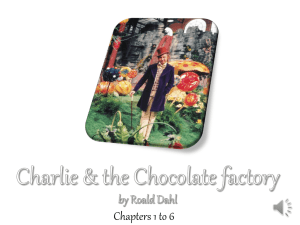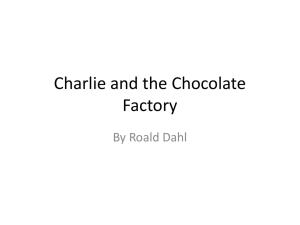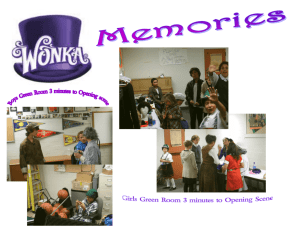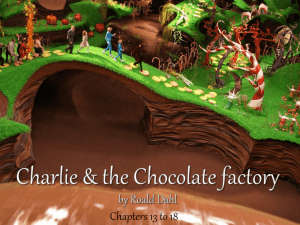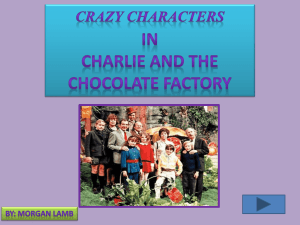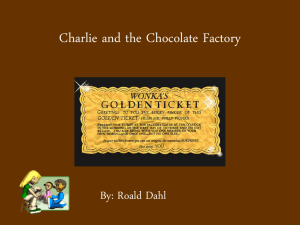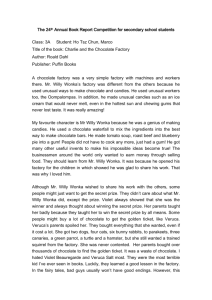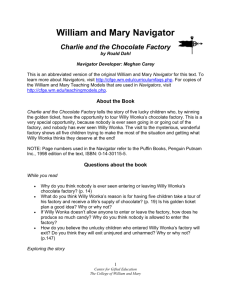Live theatre is an active
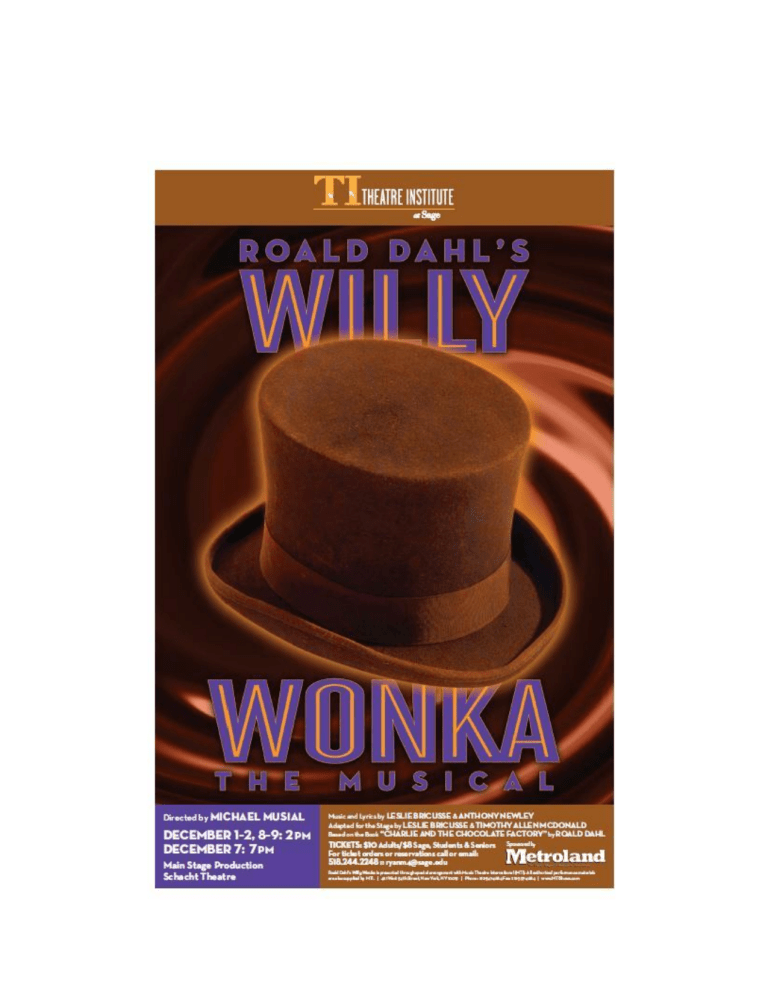
The Theatre Institute at Sage is under the umbrella of the Department of Arts and
Letters at Russell Sage College and is dedicated to providing quality live theatre and arts-in-education programming to Capital Region youth, teachers and residents and enhancing the educations of Sage students by providing performance, technical and teaching opportunities. Programs include educational support services for Theatre Institute at Sage productions (such as in-class preparations, teacher in-services, residencies and study guides), K-12 extracurricular programs on weekends, school vacation breaks and during the summer.
Live theatre is an active experience
As members of the audience, you play an important part in the success of a theatrical performance. Please review the following theatre rules with your students prior to your visit. Food, drinks, candy and gum are not permitted in the theatre. The Theatre at Sage is a nut-free zone. Many children have severe life threatening allergies; NO PEANUTS or NUT products may be brought to our theatre. No electronic devices are permitted in the theatre because they affect our sound system. Photography, audio and video recording during a performance is prohibited. Students are not permitted to leave the theatre unless they are accompanied by an adult.
Theatre is a two-way exchange, and YOU are our partners!
Actors are thrilled when the audience is engaged and responsive. We want you to laugh, cheer, clap and really enjoy your time at the theatre. However, please be considerate audience members. Talking, whispering and excessive movement during a live performance is distracting for the actors, and disruptive for other audience members. Enhance your visit by encouraging your students to look at different aspects of the production. Before the show, identify tasks for your class.
Have one group of students looking at the set, another listening for the music and sound effects, a third watching the lighting and a fourth, the costumes. Compare notes after the show about what they observed. Your students will be more informed and they’ll be surprised by how much they noticed.
This Study Guide
This study guide has been prepared by the staff of the Theatre Institute at Sage to help you prepare your students to see the play and to work the performance into your curriculum. In addition to the general areas listed below we have identified curriculum expectations that relate directly to
Willy Wonka; The Musical
, some of which are grade specific. Often activities will satisfy two or more of the NYS
Learning Standards. For example, a drama activity can be used to explore animal behavior and a visual art activity can be used to identify community members. It is our objective to suggest ideas for the creative, intellectual, social, physical and emotional development of your students. We believe that drama, music and dance activities are vital to a child’s development!
Book Author: Roald Dahl
Roald Dahl was a British novelist, short story writer, poet, fighter pilot and screenwriter.
Born in Wales to Norwegian parents in September of 1916, Roald Dahl served in the British
Royal Air Force during World War II, in which he became a flying ace and intelligence officer, rising to the rank of Wing Commander. Dahl rose to prominence in the 1940s, with works for both children and adults, and became one of the world's best-selling authors. He has been referred to as "one of the greatest storytellers for children of the 20th century". In 2008 The
Times placed Dahl 16th on its list of "The 50 greatest British writers since 1945". His short stories are known for their unexpected endings, and his children's books for their unsentimental, often very dark humor.
Some of his notable works include James and the Giant Peach , Charlie and the Chocolate
Factory , Matilda , The Witches , Fantastic Mr. Fox , The Twits , George's Marvelous Medicine , The
BFG and The Big Friendly Giant .
Early life
Roald Dahl was born at Villa Marie, Fairwater Road in Llandaff, Cardiff, Wales, in 1916, to
Norwegian parents, Harald Dahl and Sofie Magdalene Dahl ( née Hesselberg). Dahl's father had emigrated to the UK from Sarpsborg, Norway, and settled in Cardiff in the 1880s. His mother came over and married his father in 1911. Dahl was named after the polar explorer Roald
Amundsen, a national hero in Norway at the time.
In 1920, when Dahl was three years old, his seven-year-old sister, Astri, died from appendicitis.
Weeks later, his father died of pneumonia at the age of 57 while on a fishing trip in the
Antarctic. With the option of returning to Norway to live with relatives, Dahl's mother decided to remain in Wales.
Dahl first attended The Cathedral School, Llandaff. At the age of eight, he and four of his friends
(one named Thwaites) were caned by the headmaster after putting a dead mouse in a jar of gobstoppers at the local sweet shop, which was owned by a "mean and loathsome" old woman called Mrs Pratchett. This was known amongst the five boys as the "Great Mouse Plot of 1924".
Thereafter, he transferred to a boarding school in England: Saint Peter's in Weston-super-Mare.
Roald's parents had wanted him to be educated at an English public school .
His time at Saint
Peter's was an unpleasant experience for him. He was very homesick and wrote to his mother every week but never revealed to her his unhappiness, being under the pressure of school censorship. Only after her death in 1967 did he find out that she had saved every single one of his letters. Dahl wrote about his time at St. Peter's in his autobiography Boy: Tales of Childhood .
He was never seen as a particularly talented writer in his school years, with one of his English teachers writing in his school report "I have never met anybody who so persistently writes words meaning the exact opposite of what is intended." As well as having a passion for literature, he also developed an interest in photography and often carried a camera with him.
In 1929 he transferred to Repton School in Derbyshire. During his time at Repton, Cadbury, the chocolate company, would occasionally send boxes of new chocolates to the school to be tested by the pupils. Dahl apparently used to dream of inventing a new chocolate bar that would win the praise of Mr. Cadbury himself; and this proved the inspiration for him to write his third book for children, Charlie and the Chocolate Factory (1964), and to include references to chocolate in other books for children.
After finishing his schooling, he hiked through Newfoundland with the Public Schools' Exploring
Society (now known as BSES Expeditions). In July 1934, Dahl joined the Shell Petroleum
Company. Following two years of training in the United Kingdom, he was transferred to first
Mombasa, Kenya, then to Dar-es-Salaam, Tanganyika (now Tanzania). While out on assignments supplying oil to customers across Tanganyika, he encountered wildlife including black mambas and lions.
Fighter ace and intelligence officer
In August 1939, as World War II loomed, plans were made to round up the hundreds of
Germans in Dar-es-Salaam. In November 1939, Dahl joined the Royal Air Force as an
Aircraftman. With seven hours and 40 minutes experience in a De Havilland Tiger Moth, he flew solo; Dahl enjoyed watching the wildlife of Kenya during his flights. He was promoted to
Leading Aircraftman on 24 August 1940. Following six months' training on Hawker Harts, Dahl was made an Acting Pilot Officer.
On September 19, 1940, Dahl was in a plane crash which he later wrote about in his first published work. Dahl was rescued and taken to a first-aid post in Mersa Matruh, where he regained consciousness, but not his sight, and was then taken by train to the Royal Navy hospital in Alexandria. An RAF inquiry into the crash revealed that the location to which he had been told to fly was completely wrong.
In February 1941, Dahl was discharged from hospital and passed fully fit for flying duties. Dahl flew a replacement Hurricane across the Mediterranean Sea in April 1941, after seven hours flying Hurricanes. Dahl saw his first aerial combat on 15 April 1941, while flying alone over the city of Chalcis. He attacked six Junkers Ju-88s that were bombing ships and shot one down. On
16 April in another air battle, he shot down another Ju-88. On 20 April 1941, Dahl took part in the "Battle of Athens", alongside the highest-scoring British Commonwealth ace of World War
II, Pat Pattle and Dahl's friend David Coke.
Dahl began writing in 1942, after he was transferred to Washington, D.C. as Assistant Air
Attaché. His first published work, in 1 August 1942 issue of The Saturday Evening Post , was
"Shot Down Over Libya" which described the crash of his Gloster Gladiator.
Dahl was promoted to Flight Lieutenant in August 1942. During the war, Forester worked for the British Information Service and was writing propaganda for the Allied cause, mainly for
American consumption. This work introduced Dahl to espionage and the activities of the
Canadian spymaster William Stephenson, known by the codename "Intrepid".
During the war, Dahl supplied intelligence from Washington to Stephenson and his organization known as British Security Coordination, which was part of MI6.
Upon the war's conclusion, Dahl left the service with the substantive rank of Squadron Leader.
His record of five aerial victories, qualifying him as a flying ace, has been confirmed by post-war research and cross-referenced in Axis records, although it is most likely that he scored more than that during 20 April 1941 when 22 German aircraft were shot down.
Post-war life
Patricia Neal and Roald Dahl
Dahl married American actress Patricia Neal on 2 July 1953 at Trinity
Church in New York City. Their marriage lasted for 30 years and they had five children: Olivia, Tessa, Theo, Ophelia and Lucy.
Dahl married Felicity "Liccy" Crosland at Brixton Town Hall, South
London, following a divorce from Neal in 1983.
In the 1986 New Years Honors List, Dahl was offered the Order of the
British Empire (OBE), but turned it down, purportedly because he wanted a knighthood so that his wife would be Lady Dahl. Dahl is the father of author Tessa Dahl and grandfather of author, cookbook writer and former model
Sophie Dahl (after whom Sophie in The BFG is named).
Death and legacy
Dahl's gravestone, St Peter and St Paul's Church, Great
Missenden, Buckinghamshire
Roald Dahl died on 23 November 1990, at the age of 74 of a blood disease, myelodysplastic syndrome, in Oxford, and was buried in the cemetery at St Peter and St Paul's Church in Great
Missenden, Buckinghamshire, England. According to his
granddaughter, the family gave him a "sort of Viking funeral". He was buried with his snooker cues, some very good burgundy, chocolates, HB pencils and a power saw. In his honor, the
Roald Dahl Children's Gallery was opened in November 1996, at the Buckinghamshire County
Museum in nearby Aylesbury.
Regarded as "one of the greatest storytellers for children of the 20th century", Dahl was listed as one of the greatest British writers since 1945. He ranks amongst the world's best-selling fiction authors with sales estimated at over 100 million, and his books have been published in almost 50 languages. In 2003, the UK survey entitled The Big Read carried out by the BBC in order to find the "nation's best loved novel" of all time, four of Dahl's books were named in the
Top 100, with only works by Charles Dickens and Terry Pratchett featuring more. In a 2006 list for the Royal Society of Literature, author J. K. Rowling named Charlie and the Chocolate
Factory among her top ten books every child should read.
Writing
Dahl's first published work, inspired by a meeting with C. S. Forester, was "A Piece Of Cake" on
1 August 1942. The story, about his wartime adventures, was bought by The Saturday Evening
Post for US$1000 (a substantial sum in 1942) and published under the title "Shot Down Over
Libya".
His first children's book was The Gremlins , about mischievous little creatures that were part of
RAF folklore. The book, which First Lady of the US Eleanor Roosevelt read to her grandchildren, was commissioned by Walt Disney for a film that was never made, and published in 1943. Dahl went on to create some of the best-loved children's stories of the 20th century, such as Charlie and the Chocolate Factory , Matilda , James and the Giant Peach , The Witches , Charlie and the
Great Glass Elevator , The BFG , George's Marvelous Medicine and Fantastic Mr. Fox .
Dahl also had a successful parallel career as the writer of macabre adult short stories, usually with a dark sense of humor and a surprise ending. Dahl wrote more than 60 short stories; they have appeared in numerous collections, some only being published in book form after his death.
Several of Dahl’s short stories were adapted into a successful television series.
Children's fiction
Dahl's children's works are usually told from the point of view of a child. They typically involve adult villains who hate and mistreat children, and feature at least one "good" adult to counteract the villain(s). These stock characters are possibly a reference to the abuse that Dahl stated that he experienced in the boarding schools he attended. They usually contain a lot of black humor and grotesque scenarios, including gruesome violence. The Witches , George's
Marvelous Medicine and Matilda are examples of this formula. The BFG follows it in a more
analogous way with the good giant (the BFG or "Big Friendly Giant") representing the "good adult" archetype and the other giants being the "bad adults". This formula is also somewhat evident in Dahl's film script for Chitty Chitty Bang Bang . Class-conscious themes – ranging from the thinly veiled to the blatant – also surface in works such as Fantastic Mr. Fox and Danny, the
Champion of the World .
Screenplays
For a brief period in the 1960s, Dahl wrote screenplays. Two, the James Bond film You Only Live
Twice and Chitty Chitty, Bang Bang , were adaptations of novels by Ian Fleming, though both were rewritten and completed by other writers. Dahl created the Child Catcher, the supporting antagonist in Chitty Chitty Bang Bang ; in a 2005 poll, it was voted the scariest villain in children's literature. Dahl also began adapting his own novel Charlie and the Chocolate Factory , which was completed and rewritten by David Seltzer after Dahl failed to meet deadlines, and produced as the film Willy Wonka & the Chocolate Factory (1971).
Influences
A major part of Dahl's literary influences stemmed from his childhood. In his younger days, he was an avid reader, especially awed by fantastic tales of heroism and triumph. Dahl always maintained that his mother and her stories had a strong influence on his writing. In one interview, he mentioned: "She was a great teller of tales. Her memory was prodigious and nothing that ever happened to her in her life was forgotten." When Dahl started writing and publishing his famous books for children, he created a grandmother character in The Witches and later stated that she was based directly on his own mother as a tribute.
Charlie and the Chocolate Factory
Description
Charlie and the Chocolate Factory is a 1964 children's book by British author Roald Dahl. The story features the adventures of young Charlie Bucket inside the chocolate factory of eccentric chocolatier Willy Wonka.
Charlie and the Chocolate Factory was first published in the United States by Alfred A. Knopf,
Inc. in 1964 and in the United Kingdom by George Allen & Unwin in 1967. The book was adapted into two major motion pictures: Willy Wonka & the Chocolate Factory in 1971, and
Charlie and the Chocolate Factory in 2005. The book's sequel, Charlie and the Great Glass
Elevator , was written by Roald Dahl in 1972. Dahl had also planned to write a third book in the series but never finished it.
The story was originally inspired by Roald Dahl's experience of chocolate companies during his schooldays. Cadbury would often send test packages to the schoolchildren in exchange for their
opinions on the new products. At that time (around the 1920s), Cadbury and Rowntree’s were
England's two largest chocolate makers and they each often tried to steal trade secrets by sending spies, posing as employees, into the other's factory. Because of this, both companies became highly protective of their chocolate making processes. It was a combination of this secrecy and the elaborate, often gigantic, machines in the factory that inspired Dahl to write the story.
Plot
The story revolves around a poor young boy named Charlie Bucket born to a penniless, starving family. His two sets of grandparents reside in their children's dilapidated, tiny house and lead a bedridden existence, and Charlie is fascinated by the universally-celebrated candy factory located in his hometown and owned by famous chocolatier, Willy Wonka. His Grandpa Joe often narrates stories to him about the chocolate factory and about its mysterious proprietor, and the mysteries relating to the factory itself; how it had gone defunct for years until it mysteriously re-opened after Wonka's secret candy recipes had been discovered (albeit no employees are ever seen leaving the factory).
Soon after, an article in the newspaper reveals that Willy Wonka has hidden a Golden Ticket in five chocolate bars being distributed to anonymous locations worldwide, and that the discovery of a Golden Ticket would grant the owner passage into Willy Wonka's factory and a lifetime supply of confectionary. During the tour it is also revealed that Charlie is looking a successor to take over operation of his factory. Charlie longs for chocolate to satisfy his hunger and to find a
Golden Ticket himself, but his chances are slim (his father has recently lost his job, leaving the family all but destitute) and word on the discovery of the tickets keeps appearing in various news articles read by the Bucket family, each one discovered going to self-centered, bratty children: an obese, gluttonous boy named Augustus Gloop, a spoiled brat named Veruca Salt, a record-breaking gum chewer named Violet Beauregarde, and Mike Teavee, an aspiring gangster who is unhealthily obsessed with television.
Main rooms
There are four main rooms that the tour goes through, losing one child at a time. They pass many other rooms but don't go in.
The Chocolate Room
The Chocolate Room is the first room that the group enters. The main icon of the room is the
Chocolate River, where the chocolate is mixed and churned by the waterfall, but must be untouched by human hands. Willy Wonka proclaims, "No other factory in the world mixes its chocolate by waterfall." Augustus Gloop is sucked into one such pipe after falling into the river while drinking from it. Augustus is disqualified from winning the chocolate factory because of
his inability to control his gluttony. Also, there is a boat that is operated by Oompa-Loompas which takes the tour group on a Chocolate River Ride.
The Inventing Room
The Inventing Room is the second room that the tour goes through. This room is home to
Wonka's new—and still insufficiently tested—candies, such as Everlasting Gobstoppers, Hair
Toffee, and Wonka's greatest idea so far, Three-Course Dinner Chewing Gum. This candy is a three-course dinner culminating in a dessert of Blueberry pie. Once the diner gets to dessert, however, they turn into a giant blueberry. This happens to Violet Beauregarde after she rashly grabs and consumes the experimental gum. Violet is disqualified from winning the chocolate factory because of her inability to control her boasting and pride. The tour then leaves the
Inventing Room.
The Nut Room
Wonka allows the party to rest briefly outside the Nut Room, though he forbids them to enter.
This room is where Wonka uses trained squirrels to break open good walnuts for use in his sweets. Veruca Salt desperately wants a squirrel, but becomes furious when Wonka tells her she cannot have one. She tries to grab a squirrel for herself, but it rejects her as a "bad nut" and an army of squirrels haul her across the floor and throw her down the garbage chute. Veruca is disqualified from winning the chocolate factory because of her inability to control her greed and selfishness.
The Television Room
The Television Room is home to Wonka's latest invention, where they take a giant bar of
Wonka chocolate and shrink it, then send it through the air in a million pieces to appear in a television. The bar can be taken from the screen, and even consumed. At Wonka's behest,
Charlie takes the newly shrunk bar (Mike believes the bar is just an image on a screen). Mike
Teavee is amazed at this new discovery, and attempts to send himself through television, resulting in him being shrunk down to be no more than an inch high. Mike is disqualified from winning the chocolate factory because of his inability to overcome his sloth which manifested itself in watching too much TV.
Critical Reception
Although the book has always been popular and considered a children's classic by many literary critics, a number of prominent individuals have spoken critically of the novel over the years.
Children's novelist and literary historian, John Rowe Townsend, has described the book as
"fantasy of an almost literally nauseating kind" and accused it of "astonishing insensitivity" regarding the original portrayal of the Oompa-Loompas as black pygmies, although Dahl did revise this later. Another novelist, Eleanor Cameron, compared the book to the candy that
forms its subject matter, commenting that it is "delectable and soothing while we are undergoing the brief sensory pleasure it affords but leaves us poorly nourished with our taste dulled for better fare". Ursula K. Le Guin voiced her support for this assessment in a letter to
Cameron. Defenders of the book have pointed out it was unusual for its time in being quite dark for a children's book, with the "antagonists" not being adults or monsters (as is the case even for most of Dahl's books) but the naughty children, who receive sadistic revenges in the end.
Adaptations
The book was first made into a feature film as a musical titled Willy Wonka & the Chocolate
Factory , directed by Mel Stuart, produced by David L. Wolper and starring Gene Wilder as Willy
Wonka, character actor Jack Albertson as Grandpa Joe, and Peter Ostrum as Charlie Bucket.
In 1985, the Charlie and the Chocolate Factory video game was released for the ZX Spectrum by developers Soft Option Ltd and publisher Hill MacGibbon.
Another film version, titled Charlie and the Chocolate Factory and directed by Tim Burton, was released on 15 July 2005; this version starred Johnny Depp as Willy Wonka, Freddie Highmore as Charlie Bucket, Deep Roy as the Oompa-Loompas, and Geoffrey Holder as the Narrator. The
Burton film, in particular, greatly expanded Willy Wonka's personal back-story borrowing many themes and elements from the sequel. Both films, likewise, heavily expanded the personalities of the four "bad" children and their parents from the limited descriptions in the book. A video game based on Burton's adaptation was released on July 11, 2005.
This book has adapted frequently for the stage, most often as plays or musicals for children, and a radio production for BBC Radio 4 in the early 1980s. These are often titled Willy Wonka or
Willy Wonka Jr.
They almost always feature musical numbers by all the main characters
(Wonka, Charlie, Grandpa Joe, Violet, etc.).
The Estate of Roald Dahl also sanctioned an operatic adaptation of Charlie and The Chocolate
Factory called The Golden Ticket . The Golden Ticket was written by American composer Peter
Ash and British librettist Donald Sturrock. The opera received its world premiere at Opera
Theatre of Saint Louis on June 13, 2010, in a co-production with American Lyric Theater and
Wexford Festival Opera.
On 1 April 2006, the British theme park, Alton Towers, opened a family boat ride attraction themed around the story. The ride features a boat section, where guests travel around the chocolate factory in bright pink boats on a chocolate river. In the final stage of the ride, guests enter one of two glass elevators, where they join Willy Wonka as they travel the factory, eventually shooting up and out through the glass roof.
Willy Wonka; The Musical
Music and Lyrics by Leslie Bricusse and Anthony Newley
Book adapted by Leslie Bricusse and Timothy Allen McDonald
LESLIE BRICUSSE - (Composer/Lyricist/Librettist) Double Oscar and Grammy winner Leslie
Bricusse is a writer-composer-lyricist who has contributed to many musical films and plays during his career.
His stage musicals include STOP THE WORLD - I WANT TO GET OFF; THE ROAR OF THE
GREASEPAINT - THE SMELL OF THE CROWD; PICKWICK; HARVEY; THE GOOD OLD BAD OLD
DAYS; GOODBYE, MR. CHIPS; HENRY’S WIVES; SCROOGE; ONE SHINING MOMENT; SHERLOCK
HOLMES; JEKYLL AND HYDE and VICTOR/VICTORIA. He has written songs and/or screenplays for such films as DOCTOR DOLITTLE; SCROOGE; WILLY WONKA AND THE CHOCOLATE FACTORY;
GOODBYE, MR. CHIPS; SUPERMAN; VICTOR/VICTORIA; SANTA CLAUS - THE MOVIE; HOME
ALONE I & II; HOOK; TOM & JERRY - THE MOVIE and various PINK PANTHERS.
His better-known songs include: What Kind Of A Fool Am I?; Once In A Lifetime; Gonna build A
Mountain; Who Can I Turn To?; The Joker; If I Ruled The World; My Kind Of Girl; Talk To The
Animals; You And I; Felling Good; When I Look In Your Eyes; Goldfinger; Can You Read My Mind?
(The love theme from Superman); You Only Live Twice; Le Jazz Hot; On A Wonderful Day Like
Today; Two For The Road; The Candy Man; This Is The Moment; Crazy World; Pure Imagination and Ompa-Loompa-Doompa-Dee-Doo.
He has been nominated for ten Academy Awards, nine Grammys and four Tonys, and has won two Oscars, a Grammy and eight Ivor Novello Awards, the premiere British Music Award.
GEORGE ANTHONY NEWLEY (September 24, 1931 - April 14, 1999) was a British actor, singer and songwriter. With Leslie Bricusse, he wrote the musical STOP THE WORLD, I WANT TO GET
OFF in which he also performed, earning a nomination for a Tony Award for Best Leading Actor in a Musical. His other musicals include THE ROAR OF THE GREASEPAINT, THE SMELL OF THE
CROWD (1965) and WILLY WONKA AND THE CHOCOLATE FACTORY (1971).
In recognition of his creative skills and body of work, Newley was elected to the Songwriters
Hall of Fame.
TIMOTHY ALLEN MCDONALD (Adaptator) a respected educator, playwright (Roald Dahl's Willy
Wonka, The Musical Adventures of Flat Stanley, Jim Henson’s Emmet Otter) and director; Tim founded iTheatrics to create innovative programs that allow students to experience the transformative power of the arts.
Characters
Willy Wonka
In the novels and films, Willy Wonka is the eccentric owner of a chocolate factory - a factory that workers are never seen to enter, but that truckloads of chocolate and candy exit. Wonka holds a contest, hiding five golden tickets within the wrappers of candy bars. The individuals lucky enough to find them are promised both a prize and a private tour of his mysterious chocolate factory, where it is revealed he is looking for a successor.
Grandpa Joe
Grandpa Joe is one of Charlie's four bed-ridden grandparents. He tells Charlie (and the reader) the story of Willy Wonka's chocolate factory and the mystery of the secret workers. When
Charlie finds the Golden Ticket, Grandpa Joe leaps out of bed for joy for the first time in almost twenty years. Charlie takes Grandpa Joe to accompany him on the factory tour, reasoning that
Joe is the better person as he knows more about the factory than the rest of them. Grandpa
Joe's age is given as ninety-six and a half in "Charlie and the Chocolate Factory", making him the eldest of Charlie's grandparents.
Charlie Bucket
Charlie Bucket is the main protagonist, a kind-hearted, poor boy who lives with his mother, father, and four bedridden grandparents. He is curious and interested in Willy Wonka and his chocolate factory. He gets one chocolate bar a year for his birthday. He and his family follow the progress of the hunt for the Golden Tickets in newspapers and, in the films, on television.
Unlike the first four of the Wonka kids, Charlie is honest, giving, and sincere, making him a compromising hero.
One evening, as the Golden Ticket craze dies down, Charlie finds some money on the sidewalk and buys two chocolate bars, the second of which carries the fifth Golden Ticket. He returns home to read the Ticket with his family, where he discovers that the date of the tour is the following day
He and Grandpa Joe tour the factory with Wonka and the other Ticket winners, for whom
Charlie voices concern as they disappear. In the novel, at the end of the tour, Wonka informs
Charlie that he has selected him to take over the factory when he, Wonka, retires, due to
Charlie's kind nature. In addition to being trained by Wonka, Charlie and his entire family are permitted to move into the factory.
Veruca Salt
Veruca Salt is a ridiculously overindulged, selfish girl who is spoiled relentlessly by her wealthy parents. Her father apparently owns the Salt's Peanuts shelling factory, which he used to his advantage when trying to find a Golden Ticket that would grant his daughter access to Willy
Wonka's candy factory.
Mike Teavee
Mike Teavee , ‘a boy who does nothing but watch television’, is the fourth Golden Ticket finder and the last child to be ejected from the tour. In every version of the story, Mike makes many comments about the absurdities of the factory workings and of the reasoning of Wonka himself. Wonka dismisses almost all of these comments as mumbling. Mike is removed from the tour when he uses a machine Wonka created to transmit chocolate into televisions (where they can be plucked from the screen by the viewer) to send himself by television and is shrunk in the process.
Violet Beauregarde
Violet Beauregarde , 'a girl who chews gum all day', is one of the Golden Ticket winners. Violet is the third child to find a Golden Ticket and the second to be ejected from the tour.
When Wonka shows the group around the Inventing Room, he stops to display a new type of gum he is working on that doubles as a filling three-course meal. Violet is intrigued and, despite
Wonka's protests, snatches and chews the gum. Within a minute of chewing the gum, Violet becomes a super-heavy human blueberry.
Augustus Gloop
Introduced in the opening pages of the book as ‘a greedy boy’, " Augustus Gloop " is the first person to find a Golden Ticket. In the novel and both films, he is portrayed as being
‘enormously fat’ and also gluttonous. Augustus is the first child to be removed from the tour: while drinking from the Chocolate Room’s chocolate river (despite the exhortations of his parents and Wonka), he falls into the river and is sucked through a pipe to a room where fudge is manufactured
Arthur Slugworth
In the book, Arthur Slugworth is one of Willy Wonka's rival chocolatiers. Slugworth, along with
Wonka's other rivals Mr. Fickelgruber and Mr. Prodnose, sent in spies to steal the secret recipes to Wonka's treats. The work of Slugworth (along with the other rivals) came close to ruining
Wonka's factory. Wonka was forced to close his factory and fire all his workers. A few years later, Wonka's factory began working again (operated exclusively by Oompa-Loompas).
Oompa-Loompas
Oompa-Loompas are known for their short stature, green hair, orange skin and white pants with protruding knees. In early editions of the novel, Oompa-Loompas are shown as African pygmies. Following growing controversy and criticism, in later editions of the book, Oompa-
Loompas are white skinned and golden haired
Oompa-Loompas come from Loompaland, which is a region of Loompa, a small isolated area in the West Africa. Wonka ended up inviting them to work at his factory and get away from their natural predators. In the book, Oompa-Loompas are the only people Willy Wonka will allow to work in his factory, because of the risk of industrial espionage committed by his candy-making rivals.
Oompa-Loompas are also mischievous, love practical jokes, singing and are very good at improvising according to Wonka. As each bad child makes his/her exit, Oompa-Loompas sing moralizing songs accompanied by a drum beat, and tend to speak in rhyme.
Our Production
Director/ Michael Musial
“A little nonsense now and then is relished by the wisest men!”
- Willy Wonka
First published in the 1960s, Roald Dahl’s book tells the story of Charlie Bucket. Charlie’s household is far from rich – he lives in a small house with his parents and four grandparents who occupy one bed. His birthday present, always, is one bar of Wonka chocolate – a present he savors and makes last as long as possible. Wonka’s chocolate factory is a place of children’s dreams, and when Charlie learns that Mr. Wonka is opening his factory to those who find golden tickets in Wonka chocolate bars he knows he will do everything he can to win.
Charlie’s discovery of a golden ticket, having bought far less chocolate bars than many of the other successful children, leads him to a chocolate fantasyland. The five children who find the golden tickets know that there is a bigger prize to be won by one of them.
Willy Wonka is a musical in which things are either good or bad, and one way author Roald Dahl attributes goodness to something is to make it small. Charlie, for one, is small and undernourished. Mr. Wonka is also small. Finally, chocolate bars are small. Small things can
easily be underestimated by those who do not take the time to notice them. Charlie, Mr.
Wonka, and chocolate bars all have the potential to carry much more weight than one might assume. Charlie’s small appearance belies his inner strength and ability to outlast the other children and eventually take control of the entire chocolate factory. Mr. Wonka’s small size disguises his intense energy and amazing power. He has the power to determine children’s fates and grant wishes. A single chocolate bar contains all of Charlie’s hopes and dreams. When
Charlie opens it and finds the golden ticket, he realizes just how powerful something small—like he himself—can be. As the children explore the factory they get their just desserts –
Mike’s fiddling with machinery results in him shrinking; Violet’s chewing of three course gum against Wonka’s advice leads her to expand into a huge blueberry that has to be juiced.
Charlie and the Chocolate Factory has proven a success with children (and adults!). It could be seen as something of a fable for our time – in Wonka’s factory children who are over-indulged, greedy, fixated on TV and materialistic do not succeed. Charlie, who has next to nothing, is the hero of the day.
Roald Dahl was born in Wales of Norwegian parents, but wrote most of his children’s books while a resident in England in a hut at the end of his garden. Part of his schooling took place in the English seaside town of Weston-Super-Mare. Long before the days of computers his creative muse often flowed slowly from the lead of the pencils he used for writing. Despite a consistency of bizarre atmospheres and unexpected demises of small children, Dahl’s literature continues to delight both children and adults.
Set Designer/Duncan Morrison
Imagination.
Since its first printing in 1964, Roald Dahl’s classic story has been experienced by multiple generations. Many people know the original book with its illustration’s by Joseph Schindelman, others grew up reading a later edition with illustrations by Quentin Blake and, of course, countless more were introduced to Charlie’s adventure by either of two films released in 1971 and 2005. And no matter which visual you are most familiar with, they all evoke a certain timelessness for the tale and no specific place.
In that vein, we hope to retain the storybook quality by designing something that looks a little old, a little new, from a town or city just about anywhere. The first half of the show has a series of somber urban buildings that surround an empty central playing area. In this center area, scenes are created where we meet the Candy Man on the street with his cart, the gates of
Wonka’s factory, the homes of the four other Golden Ticket winners, and by rolling on stage a large bed stuffed with Charlie’s infirmed grandparents, we enter into his rickety old shack of a home.
Similarly, for the second half of the musical, the urban buildings turn around and we see brightly colored industrial walls and railings that will surround all the action in the factory. The various rooms within the factory are represented by a series of rolling platforms that are continually shifted to create machinery, stairways and even a Glass Elevator. This allows the action of the show to be fluid and continually altering. Nothing too specific, allowing our minds to fill in the details.
A world of pure imagination.
Paper Model for the Set
Building the Set
Plastic Prop Fruit and Food
Costume Designer/ Lynne Roblin
In our beginning talks about the design for this production, the director, Michael Musial, and I discovered that we were both drawn to the original movie. Because of this, we decided to go for a look for most of the cast that will be a mix of 1960s and 1970s clothing that is pulled from our stock as much as possible. Willy will have a more eccentric look, elegant, but definitely different, setting him apart from the other characters just as his personality makes him stand out.
The major challenges of the show are Violet’s blueberry transformation (which I won’t divulge here), and the Oompa Loompas. We wanted them to be a colorful contrast to the rather grim world Charlie lives in outside the factory walls, but also to have the look of a uniform. The challenge has been in finding a way to cloth 10 people in matching costumes as economically as possible. In the end, a base costume of coveralls with colorful accessories has been the solution for uniformity and will allow our Oompa Loompas to dance or move scenery as needed.
Research Pictures for Costumes
Test Photo for Oompa Loompas
Rendering/Drawing for Willy Wonka Costume
Willy Wonka Costume on Costume Form
Willy and Charlie
Grandpa Joe and Charlie
Violet’s Expandable Dress
Classroom Activities/ Lesson Plans
Design a New Room for the Chocolate Factory
Based on "Charlie and the Chocolate Factory" by Roald Dahl.
Remind the children of the story and read chapter 15 - a description of the Chocolate Room.
Discuss the purpose of individual rooms, the nut room (candy manufacture), the television room (product delivery system), the inventing room (research and development) and the chocolate room (manufacture).
Ask the children who have read the story if they can think of any of the other rooms in the factory. What might the purpose of these new rooms be?
Make a list of these new rooms on the board for the children to refer to later.
Now ask the children to make up a specific new room for the chocolate factory, making sure that they are as descriptive as possible. What is the purpose of the room? How does the new room look? Draw a picture.
How might each of the principle characters react to or act in the new room?
Cooking Activity
Here's a recipe that you can use to make about 5 dozen chocolate balls with your class:
What you need:
3 cups of semi-sweet or white chocolate chips or white chocolate chips
1 can (300ml) of sweetened condensed milk finely chopped nuts cocoa powder
What to do:
1.
Melt chocolate chips; remove from heat.
2.
Stir in sweetened condensed milk.
3.
Chill 3 hours or until firm.
4.
Shape into 1 - inch (2.5cm) balls; place on wax paper-lined trays. Chill until firm. Roll in nuts, cocoa, or dip into melted chocolate chips of a different color.
5.
Chill and enjoy.
Product Development and Design
Ask students to share and discuss their favorite foods, candies or tastes. Discuss the flavors of each of the foods. Start with adjectives related specifically to taste such as salty, sweet, bitter, etc. Then move on to other descriptive adjectives such as bland, spicy, mushy, etc. And expand the discussion to include adjectives that denote a feeling the flavor gives you such as exciting, boring, weird, etc.
Ask students to think of and list two tastes or foods or candies that are sometimes put together
(pasta and tomato sauce, mashed potatoes and gravy, the sugar and sour of Sour Patch Kids ).
Ask students to think of two tastes that might be good put together in a brand new food or candy (bacon and peanut butter chips, chocolate covered sour chews).
Have students name their new candy or food and decide on a shape and style of the food. Will their new food come in hard or soft candy? Will the shape be bars, sticks or bite-sized pieces?
Do you add water? Will the new product come in a bag, can or box?
Have students draw a picture of their new food product.
This lesson can be expanded to include a unit on marketing and promotion of the new product including English language writing activities for an advertising campaign to Math lessons involving market demographics and budgeting.
Let’s Make a Deal
This activity is based on the television game show, Let’s Make a Deal . It is designed to be an examination of temptation and the student’s awareness of individual levels of desire and/or prudence or greed.
The game is played as the game show. Contestants make choices of whether to keep what is in their possession or trade for an unknown which may or may not be of greater value.
Every student starts with a specific amount of “Deal Bucks”. Deal Bucks are printed for the class and have a predetermined value. They may represent currency, points or anything else determined to have a defined value.
Students are randomly chosen to be a “contestant”. The contestant is then given a series of choices to trade for unknowns that may or may not have greater value than the “Deal Bucks”.
These alternative choices/prizes may be represented by pictures and/or models of prizes (a photograph of a sports car, a photograph of a beach to represent a vacation, etc).
The alternative prizes can be presented in many forms such as in an envelope or a plain brown paper bag or in a form very appealing such as a gift box. There may be multiple choices for each round.
Students must decide to trade up or keep what they have in their possession.
The game is designed so that if a student consistently trades up they will eventually lose to a lesser prize. Lesson, what is greedy?
Discuss how the student felt with the presentation of each new choice. Did the student stop at some point? If not, why not?
Discuss how and if the method of presenting the next possible prize (gift box vs. brown bag) influenced the decision to trade.
Students can be grouped and told that they must work together and combine their “Deal
Bucks” in order to have the price of a trade. Have students plan how they will split/share the new prize if they win. How might students resolve a dispute if partners disagree on a trade?
Lesson Plan: Probability With A Random Drawing
Grade: Three
I. Behavioral Objectives:
SWBAT define probability; predict, record, and discuss outcomes from a random drawing; and identify most likely and least likely outcomes. Each student will conduct a random drawing; record the data on a data chart; analyze the data; and graph the data.
II. Instruction/Method:
A. Anticipatory Set:
1. Explain that today they will learn about probability.
2. Define probability as a mathematical term for chance. (The chance that something will happen.)
3. Brainstorm ideas of probability in everyday life, such as the weather forecast
(chance of rain), decisions we make that depend on the chance of the outcome (Should I take an umbrella with me?), the chance of winning the lottery, and playing games (chance of winning).
4. Review ways to collect and organize data. First, review ways to collect data.
Then, review how to organize data in a chart. Show them an example of a data chart with information recorded.
B. Statement of Objective:
"When we finish today you will be able to predict, record, and discuss outcomes using a random drawing experiment and identify most likely and least likely outcomes."
C. Instructional Input:
1. Review the definition of probability (chance).
2. Discuss the following definitions to ensure understanding: "likely," "more likely," "less likely," and "equally likely."
3. Use the weather forecast, an everyday example of probability in use, to help the students understand these new terms. Compare the weather forecasts for several days using the terms. For example, if the forecast states that there is a 20% chance of rain on Monday and a 90% chance on Tuesday, ask the students which day it is more likely to rain, which day it is least likely to rain, and so on.
4. Discuss what a random drawing is by example of the lottery. Give each student a numbered ticket and put a duplicate of each student's ticket in a clear bowl. Mix the numbers as you explain to the students that they all have an equal chance to win the class lottery because they each have only one ticket. However, in other lotteries, many people buy more than one ticket in order to increase their chance of winning. Ask the students, "If I gave one student two tickets, would his or her chance of winning increase or decrease". Have the students put their thumbs up for increase and thumbs down for decrease. This way you can see who needs further explanation.
Continue to explain a random drawing by showing the students that you draw a ticket out of the bowl without looking and thus it is a random pick of the winner. Reward the winner with a homework pass. Explain to the class how to express each student's chance of winning in terms of numbers (1 out of total in class).
D. Modeling:
1. Explain to the students that they are now going to conduct several experiments in which they will learn more about probability.
2. Show the students a paper bag, in which you have secretly put five blocks
(two reds, two blues, one yellow). Tell the students, "There are five colored blocks in the bag. As a class, we are going to predict and identify the colors of the blocks, and how many of each color are in the bag."
3. Have the students form a single line. The first student then draws a block from the bag and the color of the block is recorded on the board. The student replaces the block and then goes to the back of the line.
4. After the first ten students have drawn out a block, stop and make predictions. First, ask the students to identify the colors of the blocks. Next, have them predict how many of each color are in the bag.
5. Continue the drawings, adding the rest of the class' colors to the first ten.
After everyone has had a turn, ask the students to reevaluate their guesses and make new predictions if necessary. The drawings will continue until the predictions are correct.
6. Discuss how the students decided how many blocks of each color were in the bag.
7. Discuss the activity further using the new terms. Ask the students which color was most likely to be picked, which color was least likely to be picked, how many of each color would need to be added for the chances to be equal, and so on.
E. Checking for Understanding:
1. Show the students a new number of yellow, red, and blue blocks. Have them record which colored block is most likely to be chosen, which colored block is least likely to be chosen, and how many of each colored block would need to be added in order for the chances to be equal.
2. Discuss their answers.
F. Guided Practice:
1. This will be a good time to start the book Charlie and the Chocolate Factory by Roald Dahl. It will need to be read up to chapter five, which talks about the golden tickets and Charlie's small chance of getting a gold ticket. If your class has read Charlie and the Chocolate Factory retell the story and reread chapter five.
2. Discuss what a small chance Charlie had to win a golden ticket and how he must have felt about having such a small chance.
3. Divide the class into heterogeneous groups of four. Give each group a paper bag with one golden Hershey Kiss and three silver Hershey Kisses inside.
4. Explain that the students are now going to perform their own random drawings for "gold tickets." Discuss how they are going to record their data in a data chart with tally marks. Discuss and draw together what the chart should look like and what information the chart should contain.
5. Instruct each group to take turns drawing a kiss out of the bag without looking (remind them that not looking is what makes it random). Record the color on their data chart, and then return the kiss to the bag. Each person will draw five times (total of 20 draws).
6. If necessary, assign each group member a number 1, 2, 3, or 4.
Student Number:
#1-Please draw a Kiss out of the bag without looking five times.
#2-Please record the color of the Kiss drawn each time on the data chart.
#3-Make sure the Kisses are returned to the bag after each draw and shake the bag before the next draw.
#4-Group leader: Make sure everyone is doing his or her job and that the group member drawing the Kiss from the bag is not looking.
After five draws, the members will change jobs until everyone has had a turn to draw five Kisses.
7. After ten drawings (or the first two students), have the students stop and make predictions about the number of silver Kisses, the number of gold
Kisses, and the total number of Kisses.
8. Instruct the groups to record their results in a graph or pictograph to be shared with the class.
9. Walk to each group and observe who is working well in the group, who is following directions, and how well each student seems to understand the activity.
G. Independent Practice:
1. Give each student his or her own paper bag of Kisses with a new number of silver
Kisses in each one.
2. Have the students perform his or her experiment with the same directions that applied to the guided practice, except they should draw twenty times on their own. Remind them to stop after ten drawings and make predictions.
3. Have these questions on the overhead for the students to answer about their experiment:
What color Kiss were you more likely to draw?
What color Kiss were you least likely to draw?
How many gold or silver Kisses need to be added to make your chances equal?
Graph your results in a pictograph, circle graph, or bar graph.
For answers to questions and more information contact:
David Bunce bunced@sage.edu
518-244-4505
Heather Hamelin hamelh@sage.edu
518-244-4504 www.sage.edu/theatreinstitute
For Tickets contact:
Ryanm4@sage.edu
518-244-2248
